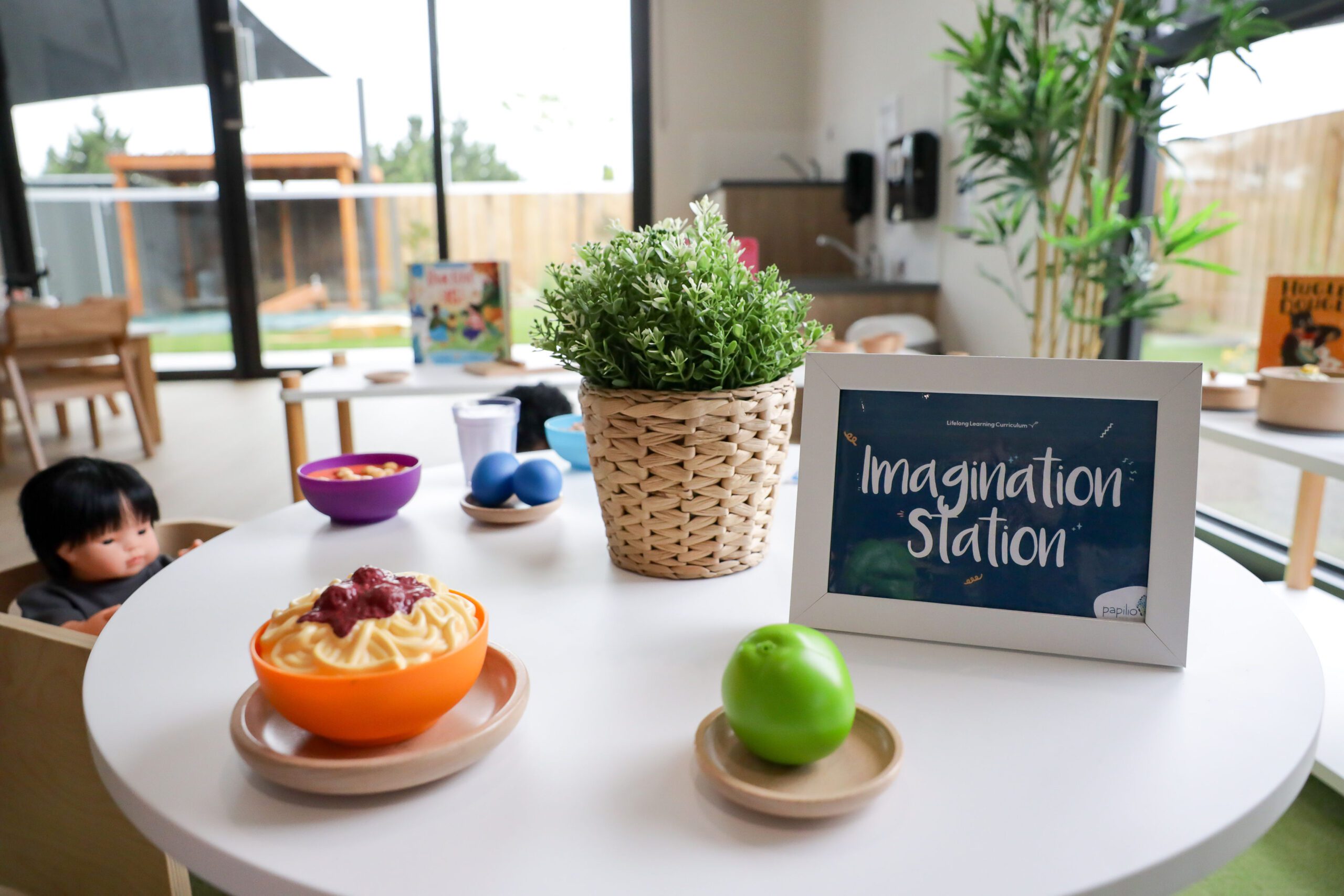
In the rush of daily life - packed lunches, work meetings, sticky fingers, and sibling negotiations - creating a space where your child can slow down, focus, and play meaningfully might feel like an impossible dream.
But here’s the beautiful truth: you don’t need a perfectly styled playroom or shelves of designer toys to offer your child a rich, play-based learning experience at home. In fact, with just a small corner, a few intentional choices, and a little insight into how children learn, you can build a play-and-learn nook that nurtures creativity, independence and calm.
At Papilio Early Learning, we see every day how play shapes children’s thinking, behaviour and connection. And with just a little inspiration from our learning environments, you can bring that same purpose-driven play into your own home, no big budget required.
Why Play Is More Than Just Fun
We talk a lot about play, and for good reason. Play is how children explore the world, solve problems, build confidence, and understand their place in it. It’s the foundation of healthy development.
In Stolen Focus by Johann Hari (read more here), he writes about the growing crisis of distraction in children and adults alike, and how meaningful play may be one of the best antidotes. Play isn’t passive. It demands creativity, emotional regulation, and deep engagement - all things children will need for the rest of their lives.
The Harvard Centre on the Developing Child also backs this up, highlighting that play-based learning strengthens memory, builds executive functioning skills and lays the groundwork for long-term academic success.
That’s why at Papilio, our Lifelong Learning Curriculum is designed around learning through play. And it’s something you can support at home, too.
Step 1: Find a Calm, Welcoming Corner
This doesn’t need to be fancy. Choose a spot in your home, even a metre-wide stretch of floor, where your child can feel calm and undistracted.
Think:
- Natural light
- Soft, warm colours
- A clear boundary (like a rug or low shelf) to define the space
- A few carefully selected materials, rather than clutter
Even a nook beside the couch or a space by a window can become their special place.
Step 2: Recreate the Magic of Our Learning Zones
At Papilio, our centres are thoughtfully divided into learning zones that align with how children naturally explore and grow. You can reflect this same structure at home, with items you likely already have, and tailor it to suit your child’s age.
Book Nook
Purpose: Builds early literacy, attention, and language.
- Toddlers (1–3): Board books, textures, sounds, flaps. Look at the pictures together and talk about what you see.
- Kindergarteners/Preschoolers (3–5): Picture books, rhymes, simple nonfiction. Encourage retelling stories or “reading” to a sibling or toy.
Tip: Rotate books every week or two. Less really is more.
Construction Zone
Purpose: Encourages spatial reasoning, persistence, STEM skills.
- Toddlers: Chunky blocks, stacking cups, shapes they can grasp and knock down.
- Kindergarteners/Preschoolers: Duplo, cardboard boxes, train sets. Add a challenge: “Can you build a bridge that holds your teddy?”
Tip: A shoebox full of blocks is often more engaging than a giant toy bin.
Imagination Station
Purpose: Develops empathy, storytelling, problem-solving.
- Toddlers: Toy phones, soft toys, kitchen spoons - anything they can use to mimic real life.
- Preschoolers: Costumes, role-play sets (doctor, builder, parent). Ask, “Who are you pretending to be today?”
Tip: Let the story be messy. It’s in the pretending where the learning lives.
Little Artists Corner
Purpose: Supports fine motor development, creativity, self-expression.
- Toddlers: Finger paints, stickers, chunky crayons.
- Kindergarteners/Preschoolers: Child-safe scissors, glue sticks, collage bits. Ask open-ended questions like “Tell me about your picture.”
Tip: Keep supplies in a tray or box they can access independently (with your guidance).
Discovery Zone
Purpose: Builds curiosity, concentration, and scientific thinking.
- Toddlers: Sensory bins, water play, nature treasures.
- Preschoolers: Magnifying glass, sorting activities, mini experiments like “What floats?”
Tip: Collect items on a nature walk and explore them together in the nook.
Completely Connected Space
Purpose: Supports identity, belonging, and emotional security.
- For all ages: Include family photos, cultural items, drawings, or anything that reflects your child’s world.
Tip: Ask, “What would you like to add to your space?” and let them help set it up.
Step 3: Focus on What Matters (Not What Costs Money)
It’s easy to get caught up in what you don’t have. But your child doesn’t need more stuff, they need more space to play with meaning.
- Shop your home first - pots become drums, scarves become capes.
- Visit op shops, join toy libraries, or swap with friends.
- Keep the space clutter-free and rotate toys to renew interest.
- Let your child help set it up and choose what goes in. Ownership builds independence.
Step 4: Let Play Guide the Day
You don’t have to schedule the nook or manage every moment. Children will naturally move in and out of play when the space is welcoming and set up for success.
Watch what sparks their interest and lean into it. A five-minute tower today might be a city tomorrow. A quiet reading nook might become a stage.
Want to See These Zones in Action?
At Papilio Early Learning, we believe in creating spaces that inspire wonder, curiosity and joy, not just at our centres, but in every home we support.
Come and see how our learning environments bring the magic of play to life, guided by our exclusive Lifelong Learning Curriculum. Find a centre near you and book a tour today.
Let’s raise children who are curious, capable and calm, one playful moment at a time.